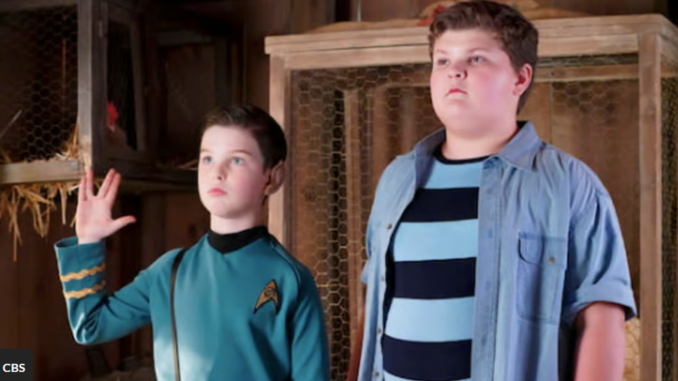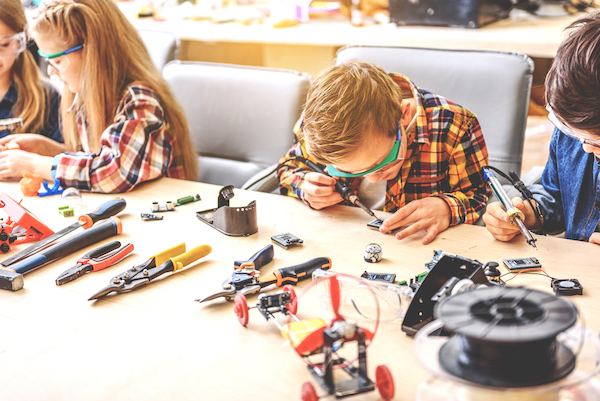
“Young inventors should always strive to go beyond mere brainstorming, proceed to the drawing board or otherwise get hands?on whenever they have a eureka moment.”
 As the hit sitcom Young Sheldon comes to an end next month, a look back at the series offers an opportunity for young inventors to learn about inventorship. The coming-of-age show centers around a boy genius, Sheldon, who has run the gamut of growing up in expedited fashion—experiencing high school, college dorm life, and even a first (failed) kiss (attempt), all before being eligible to drive. Another milestone in Sheldon’s life—his first inventorship dispute—shows that it doesn’t take a boy genius to become a young inventor.
As the hit sitcom Young Sheldon comes to an end next month, a look back at the series offers an opportunity for young inventors to learn about inventorship. The coming-of-age show centers around a boy genius, Sheldon, who has run the gamut of growing up in expedited fashion—experiencing high school, college dorm life, and even a first (failed) kiss (attempt), all before being eligible to drive. Another milestone in Sheldon’s life—his first inventorship dispute—shows that it doesn’t take a boy genius to become a young inventor.
In Season 6 of Young Sheldon, Sheldon creates a comic book database that he successfully populates with his local comic bookstore’s entire inventory. Soon after, he realizes his database invention can be useful for other applications, such as for scientific grants. Sheldon proposes his idea to Linda Hagemeyer, the president of the fictional East Texas Tech University, where Sheldon is a prodigy student. Interests diverge among all involved parties. Sheldon is excited about positively impacting the scientific community; Hagemeyer salivates over collecting access fees from every university; Sheldon’s parents are concerned about the University receiving 90% of all profits; and Sheldon’s professor, Dr. Linkletter, is convinced he should receive inventorship credit. Amidst the conflict, Sheldon decides to use private investors to see his idea through.
Sheldon’s inventorship journey provides some key takeaways for young inventors who are looking to patent their own inventions and understand the nuances of inventing while in school.
You’re Never Too Young to Be an Inventor
The U.S. Patent Act does not require a minimum age for inventors. Just last year, the U.S. Patent and Trademark Office (USPTO) issued U.S. Patent No. 11,642,606, with seven-year-old Matthew Sleman as the sole inventor of “Hydrochromic Building Elements And Methods Of Use” (i.e., color-changing blocks). Indeed, the USPTO spotlights and celebrates young inventors, encouraging students of all ages to participate in innovation and entrepreneurship. While Sheldon had to wait a couple of more years before he could legally drink beer or vote, he did not have to wait to become an inventor.
School Work vs. Independent Development
Schools typically own the intellectual property (IP) their students create, provided the IP is related to the student’s research. While each school policy on IP might differ, the Texas A&M IP Management and Commercialization Policy acts as an example of how such a policy might look. Section 17.01 of that policy confirms the University’s “ownership in all intellectual property developed by faculty, scientists, staff, and students employed by the members,” but section 17.01.01 clarifies that:
Intellectual property owned by the IP creator [e.g., a student] is that intellectual property: (a) unrelated to the IP creator’s employment responsibilities; (b) developed on the IP creator’s own time; and (c) developed without the support of the system or any of its members or the significant use of system and/or member facilities.
Young Sheldon is clear throughout that Sheldon conceived of his database invention during his work at the Comic Book Store, not during his activities at the university. Moreover, a research grant database is not related to Sheldon’s research in theoretical physics. Thus, assuming Sheldon executed a confidentiality agreement with East Texas Tech, Sheldon would be free to pursue his database idea through other investors. Students looking to patent their own inventions should always read their school’s IP policies, even in high school (check out Baltimore City Board of School Commissioner’s IP Policy, defining Student work product).
Inventions Require Getting Your Hands Dirty
All inventors need to remember the difference between an idea and an invention. While people come up with great ideas all the time, simply having an idea cannot guarantee a patent for an inventor. To obtain U.S. patent protection, inventors need to develop it further with a working prototype, a proof-of-concept, or at least a description of the invention that enables others to make and use the invention. This is something patent attorneys call “reduction to practice.”
Sheldon learned about reduction to practice the hard way. After moving onto private investors, Sheldon ultimately found out that East Texas Tech was pursuing his database idea without him. As the scene unfolds, the audience comes to understand that Sheldon may not have done enough to patent his database invention. Although Sheldon “conceived” his idea and secured funding, he had not started programming his database or found a mainframe computer to create the database.
Reduction to practice is not Sheldon’s forte. Throughout the show, Sheldon also came up with the idea for cryptocurrency and online classes. Yet, he did not come to be known as the inventor for any of these things, probably because he only talked about them. Young inventors should always strive to go beyond mere brainstorming, proceed to the drawing board (take a picture of your work!), or otherwise get hands?on whenever they have a eureka moment.
Never Too Young to Invent
Inventorship disputes are not normally part of a young person’s growing pains—but they may become more common as kids as young as high schoolers begin to take more of an interest in IP. Sheldon’s inventorship story can teach young inventors that they’re never too young to start. Young Sheldon serves as a reminder that, as long as they’re willing to get hands-on and preserve their work with whatever sparks of genius come their way, anyone can become an inventor all on their own.
